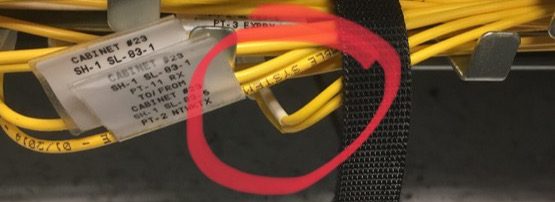
When installing fibre optic cable, care must be taken to ensure that the cable is not bent, stretched or deformed. The best case is that the fibre core will break and be faulty, the worst case is that the fibre optic core will be deformed or damaged and cause signal distortion that results in intermittent faults.
Two types of fibre optic cable
In data networking, two types of cable are in common use — single mode (SMF) and multimode (MMF). The core is embedded in a layer of cladding that helps to protect and strengthen the cable.
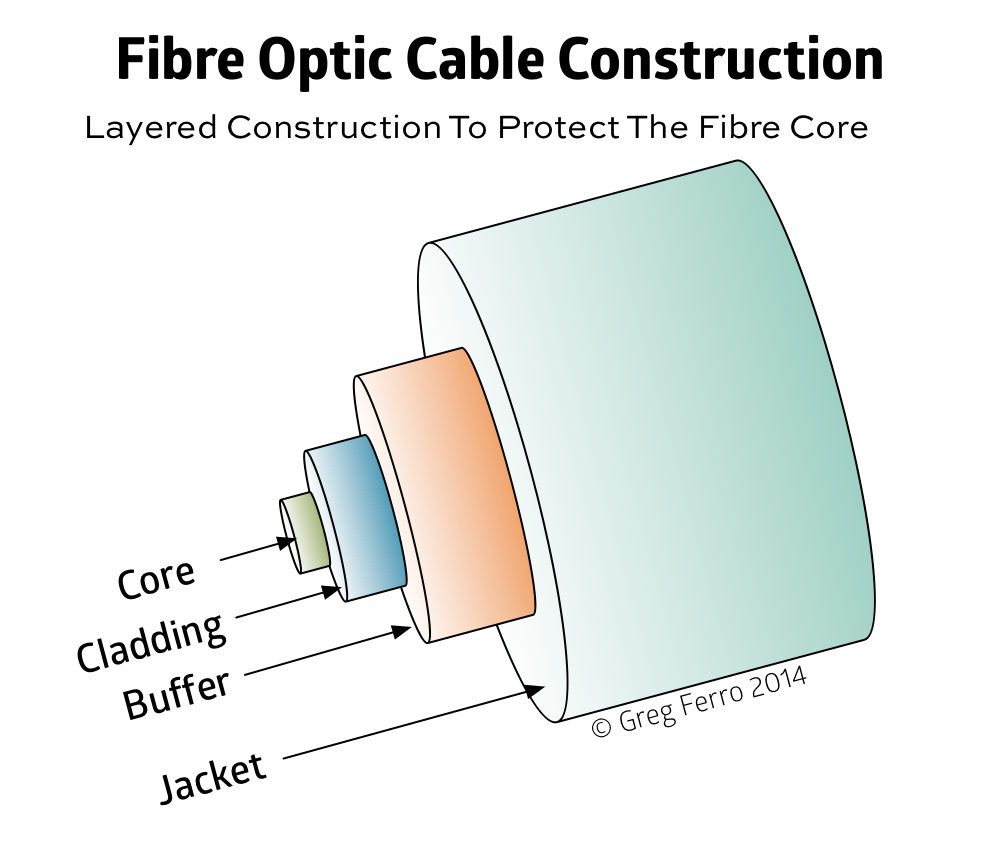 Figure 1 — Fibre optic cable construction.
Figure 1 — Fibre optic cable construction.
Fibre breakage
The glass core in a fibre optic cable is fragile. It is slightly thicker than a human hair but made of glass (more rarely, a plastic material may be used for multi-mode). Manufacturers have been able to design and manufacture the core material to be somewhat elastic and resilient to bending. Single mode fibre uses a special type of glass that is extruded into a solid medium to protect it. MMF is made from glass but being thicker (at 50 µm compared to 9 µm), is more robust. Because of this, SMF is more sensitive to breakage than MMF.
When the core is stretched or bent beyond a certain point, the core will physically break into two parts. The cladding and buffer around the cable core helps to prevent damage. The glass core has some space to protect against movement, thermal expansion/shrinking, and for installation.
When the cable’s physical integrity is compromised, two outcomes are possible. The best case is that two pieces of the core are not physically aligned and no laser light will propagate. Something that is broken can be located and fixed.
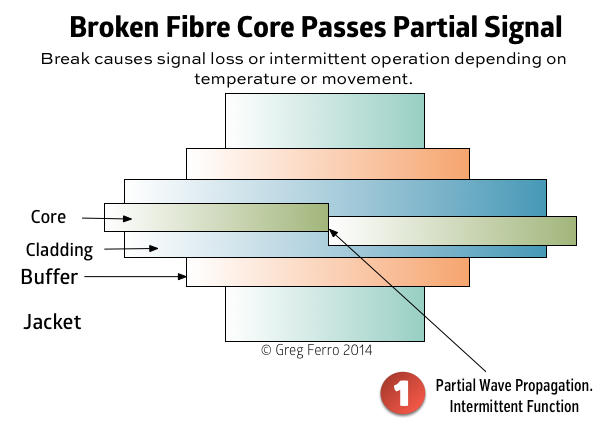 Figure 2 — Broken fibre core passes partial signal.
Figure 2 — Broken fibre core passes partial signal.
A less common case is that core materials will be partially aligned after the break and pass a partial signal. The network may or may not work due to the drop in laser power.
Intermittent operation may occur as the cable expands/shrinks with temperature, vibration or movement and the core loses alignment or the gap expands to reduce laser power to a non-functional level.
A fibre optic cable relies on complete internal reflection — and this scenario still supports that — but a substantial amount of signal power can be lost at this interface, plus reflections at the break/air interface will have secondary effects.
Cracking of the fibre core
It is also possible that the fibre core might be damaged instead of broken. For SMF, the glass might only crack and cause imperfection in the medium, which would reduce signal propagation and cause reflections. MMF is more likely to be damaged by flexing and cause power loss. In the case of graded fibre, this is quite damaging to the signal as it will be badly distorted.
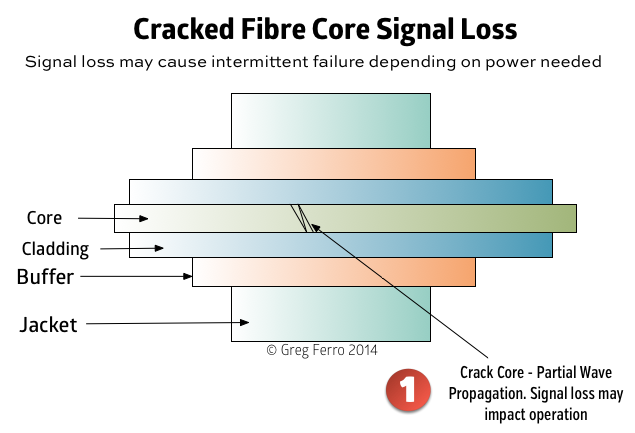 Figure 3 — Cracked fibre core signal loss.
Figure 3 — Cracked fibre core signal loss.
Best and worst cases
When working with fibre optic patch leads, it is common for people to trap them in doors or stretch them by pulling on them. While patch leads are designed to be more flexible compared to the cabling used in risers, they are still susceptible to breakage in the best case. Best case means that the cable doesn’t work; worst case is when the fibre core is partially damaged and likely to cause intermittent operation.
Intermittent is much worse than broken. Another reason for replacing cables is that the fibre connectors are dirty, scratched or faulty and new cables will improve the power level received. Cleaning the cables and SFP (Small Form-Factor Pluggable) connectors can also resolve intermittent problems.
In my opinion, that’s why replacing the cable often fixes intermittent problems in a network. It is very hard to test or confirm a faulty fibre optic patch lead. A faulty patch lead can cause waveform deformation through propagation distortion or power loss through a cracked or misaligned core. And according to the temperature fluctuation, ambient vibration by fans and coolers, or just being moved, the network might have problems.
The image below shows a fibre optic patch where the rack door has been pressing on the patch where the strain relief ends, and rather obviously, the bend radius has been severely compromised. While patch cables are fairly robust, this cable is faulty when the door is closed but working when the door is open.
That’s worse than just broken.
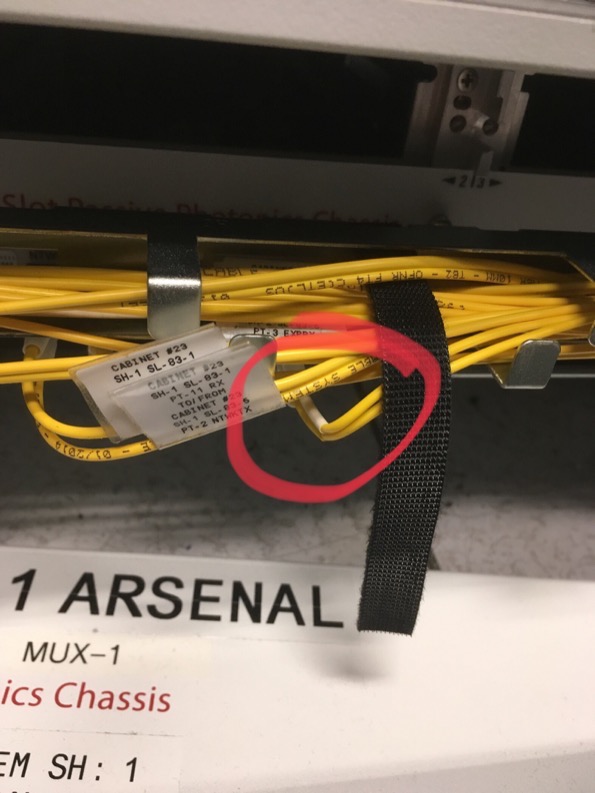 Figure 4 — Door jammed on cable, partial fault.
Figure 4 — Door jammed on cable, partial fault.
EtherealMind’s First Law of Networking is “Always Check the Physical”. This is why.
Original post appeared on Packet Pushers.
The views expressed by the authors of this blog are their own and do not necessarily reflect the views of APNIC. Please note a Code of Conduct applies to this blog.

It is such a wonderful post to read. You have briefed every details cracked wiring. Thank you for enlightening us on fibre optic cables.
It depends what the wiring is in the wall. if it’s old-school telephone cable , its not going to work. If they wired the telephone lines up with Cat 5 or Cat 6 Ethernet cable, then that can also be used for data transfer. Any electrician will be able to advise you on what you have in suit.
such a amazing blog. Really helpful. Thanks for sharing
fix problem: always work with rack door open 😀 …kidding!
we had the same problem for quite some time.
finally found the broken cable since it was in a solid tube but the end was bend over and caused some serious issues from time to time..
cheers
why put connectors on ends ? is it to keep dirk out, moisture or not break the end?
Great job about fiber optic cable breakage and installation.
We look forward to hear about 19 rack cabinets too.
Hey,
What a wonderful article. I like the part where you advise about the cracking of the fiber core and lost signals. Thank you for sharing your knowledge about fiber optic cables.